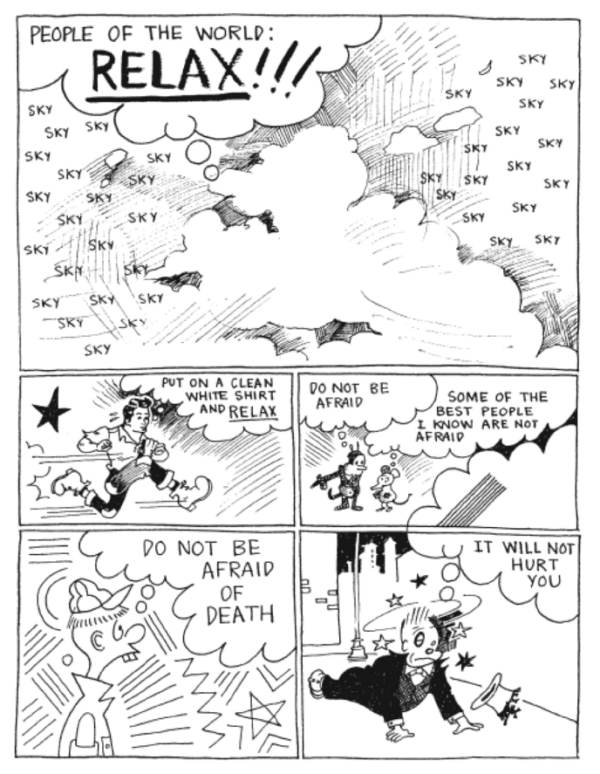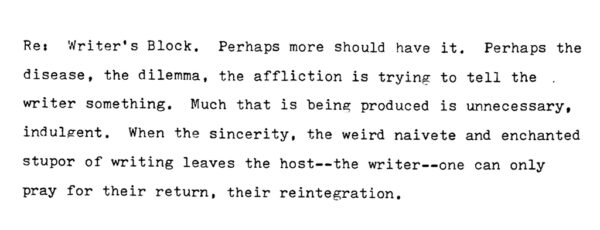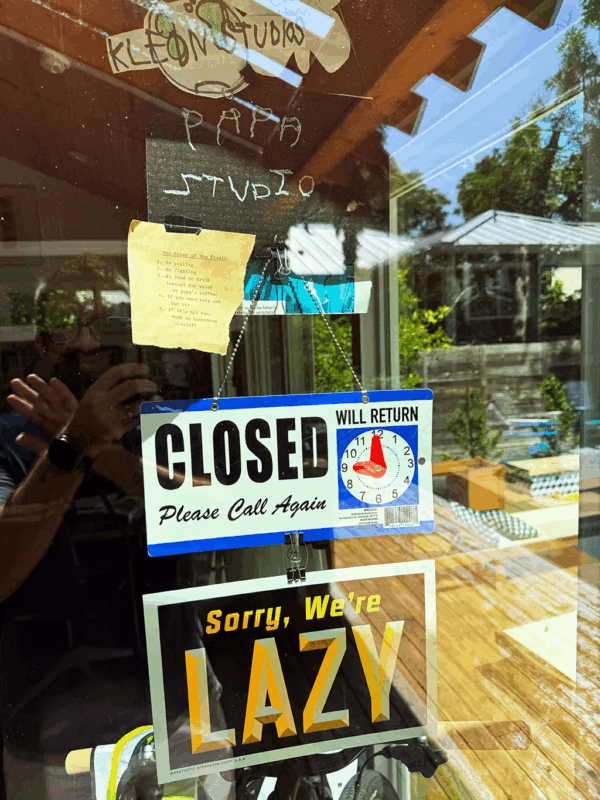Elmore Leonard said, “Writer’s block just means you got up from your desk.”
Writer’s block is trying to tell you something

In a terrific mini Q&A, Lauren Groff (author of the wonderful novel Matrix, whose followup I cannot wait for) says she thinks writer’s block is an “umbrella term for a series of very different pains.”
1. The “fear of imperfection, which can be combatted by a writer carefully training herself to let her work be messy and impermanent.” Groff gets over this by writing longhand and not typing on the computer until she has a good sense of the piece.
2. “Being impatient with your work and not allowing it the time it needs to develop.” (Her teacher, Loorie Moore, told her to “relax” and not rush things and know that nothing is ever wasted.)
3. “The canary toppling over in the coalmine, the way that your work is telling you that you’re going down the wrong path and you need to reconsider some larger issues.” For this she suggests what I call the put it in the put it in the drawer and walk out the door strategy. And while you’re letting it sit, read, read, read:
During that time away, be in your chair every day, but be there by reading everything you can get your hands on, and you’ll find a solution in the hundreds of thousands of words you’ve read.
(For me, problems of output are usually problems of input.)
All of this reminded me of Joy Williams, who had my favorite take on writer’s block: “Perhaps more people should have it.”

See also: “Skip the boring parts”
(Groff interview via Laura Olin.)
A solution to writer’s block: Transcribe yourself

Stewart Brand once said to Brian Eno: “Why don’t you assume you’ve written your book already — and all you have to do now is find it?”
In a similar vein, I enjoyed this story of how KC Davis, author of the brilliantly-titled How To Keep House While Drowning, wrote their book:
I had long stared at blank word documents, unable to get my thoughts on the page. I’m actually not a great writer — but I am a pretty good speaker. So I went back through my social channels and transcribed every short form video I had ever done on this topic and that left me with all these disjointed paragraphs. I spent another two months trying to decide how to connect these little vignettes into a “real” book and finally realized that my choices were to publish an imperfect book or not publish the perfect book. So I decided to make each section its own chapter — some only a page long.
I’m reminded of this advice from Matt Zoller Seitz:
Here is a technique I suggest to fellow writers who are blocked for whatever reason: just talk about the piece with a friend, record it, then play it back and write down the good stuff. This method also works with Gchat & similar programs. Go straight to document after.
And how Nicholson Baker wrote his brilliant book The Anthologist by filming himself with a camcorder:
He set up a camcorder and recorded himself presenting in various parts of his house. “I would try to rehearse what it would be like to explain something complicated, like iambic pentameter, in a familiar way,” says Baker, who also found himself singing poetry in his own barn, in Maine. “How would you explain it if you’d been thinking about it for twenty years? So I came up with 40 hours of tape and transcribed the audio.”
I suppose one could skip the transcription step by talking directly into the computer’s speech-to-text?
I know a lot of songwriters do this with song ideas: they record a bunch of voice memos on their phone, but then they make time to listen to what they’ve recorded, often on shuffle.
Regardless of the tech you use, the method is: record yourself thinking out loud, and once you’ve transcribed that into a draft: edit yourself by reading out loud.
